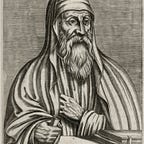Glastonbury, Pop, and Female ‘Representation’
The sad conflation of spectacle and substance
It’s Glastonbury this weekend in the UK, a festival once known for its performances of great alternative bands. In 1995, the headliners of Glastonbury were Oasis, Pulp, and the Cure; in 1997, Radiohead, The Prodigy, and Ash; in 1998, Primal Scream, Blur, and Bob Dylan.
Indeed, at one time in my youth, I would have seen Glastonbury as a redeeming feature of mainstream culture, a mainstream that contained an alternative that was very much alive.
Well, this weekend, Glastonbury will see the headlining of Dua Lipa, a pop “artist” with dubious to no involvement in her own songwriting, Coldplay, a band whose last album took selling out to new heights, working with kiddy pop producer Max Martin and producing ear-offending songs sung in pitch-shifted chipmunk vocals, collaborations with BTS and Selena Gomez, and SZA, whose latest song includes a video in which she gives a lap dance to a robot and runs around naked in a field as the camera pans in on her arse.
I know what you’re going to say, look at all the women and the diversity, and wasn’t the 1990s just full of white males? Okay, you’ve got a point. In the golden era of Glastonbury, women were hardly highly ranked as artists. But not only have we not solved this, what…
